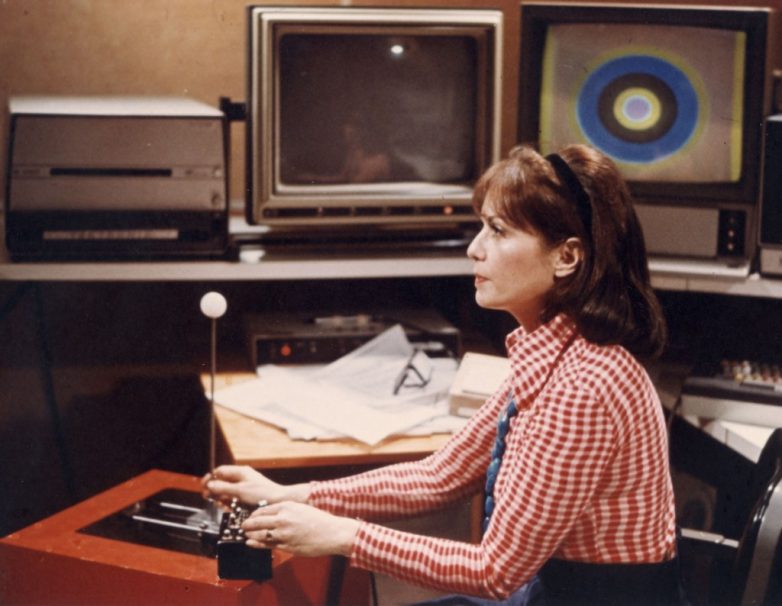

Obituary – Death – Cause of death News : Lillian Schwartz, a pioneering artist known for her groundbreaking work in digital art, has passed away at the age of 97. Through her innovative use of computers, Schwartz pushed the boundaries of traditional painting and paved the way for many artists working in the digital realm today.
Born in 1927 in Cincinnati, Ohio, Schwartz faced adversity from a young age, growing up in a family of 13 siblings in a time of rampant antisemitism. Despite these challenges, she found solace in art, creating sculptures and drawings that would later pave the way for her groundbreaking work in the digital realm.
Schwartz’s career took off in the 1960s when she began creating sculptures that incorporated elements of technology and light. Her work caught the attention of the art world, leading to her inclusion in prestigious exhibitions such as “The Machine as Seen at the End of the Mechanical Age” at the Museum of Modern Art.
It was during this time that Schwartz began to experiment with computer-generated imagery, creating films that combined elements of abstraction, color, and movement. Her films, such as “Pixillation” and “UFOs,” pushed the boundaries of what was possible with digital art, showcasing her unique vision and technical prowess.
Despite facing challenges and skepticism from some in the art world, Schwartz continued to push the boundaries of digital art, becoming one of the first female artists in residence at Bell Labs. Her work garnered recognition and acclaim, leading to her participation in prestigious events such as the Venice Biennale.
Throughout her career, Schwartz remained dedicated to exploring the intersection of art and technology, believing that computers could unlock new possibilities for artistic expression. Her legacy lives on in the work of countless artists who have been inspired by her innovative approach to digital art.
In her own words, Schwartz once said, “Ignoring the computer would be ignoring a large part of our world.” Through her pioneering work, she not only embraced the technology of her time but also opened up new possibilities for artistic expression in the digital age.

Lillian Schwartz, Computer Art Pioneer, Dies at 97
Lillian Schwartz, a trailblazing artist who pushed the boundaries of digital art, passed away at the age of 97. Kristen Gallerneaux, a curator at the Henry Ford Museum, confirmed her death. Schwartz was known for her innovative use of computers to create visually stunning works that redefined the art world.
One of Schwartz’s notable achievements was being the first female artist in residence at Bell Labs. She used computer technology to explore new artistic possibilities and even devised a new theory about Leonardo da Vinci’s iconic painting, the Mona Lisa. Despite facing challenges as a female artist in a male-dominated field, Schwartz made a name for herself and exhibited her work alongside renowned male colleagues in the 1960s.
Over the years, Schwartz’s contributions to digital art have gained recognition, with her work being featured in prestigious exhibitions like the Venice Biennale. She believed that computers could help unravel the mysteries of the modern world and used technology to reflect the societal changes of the time.
Born in 1927 in Cincinnati, Ohio, Schwartz faced adversity early in life due to antisemitism and prejudice. Despite the challenges, she pursued her passion for art and creativity. From making sculptures as a child to studying nursing and eventually venturing into the world of digital art, Schwartz’s journey was marked by resilience and determination.
Schwartz’s time in Japan, where she contracted polio and learned calligraphy and meditation, played a significant role in shaping her artistic vision. It was during this period that she developed the idea of creating art in her mind before translating it into physical form—a practice that would later inform her work with computers.
In the 1960s, Schwartz began creating sculptures that incorporated traditional materials like bronze and cement, but she soon transitioned to experimenting with computer-generated art. Her breakthrough came with the sculpture "Proxima Centauri," which captivated audiences with its interactive and dynamic design.
As Schwartz delved deeper into the world of digital art, she started making films that combined elements of nature with computer-generated imagery. Her work, such as "Pixillation" and "UFOs," showcased her mastery of color and form, creating mesmerizing visual experiences for viewers.
Despite facing challenges within the industry, Schwartz’s innovative approach to art caught the attention of researchers and art enthusiasts alike. Her groundbreaking research on the Mona Lisa, which suggested that Leonardo da Vinci used his own image to create the iconic painting, garnered widespread interest and acclaim.
In 1992, Schwartz published "The Computer Artist’s Handbook," a comprehensive guide to digital art that she co-authored with her son Laurens. The book showcased her expertise in the field and solidified her legacy as a pioneer in digital art.
Throughout her career, Schwartz remained humble about her accomplishments, attributing her success to passion and perseverance. Her journey from a young artist facing adversity to a celebrated figure in the world of digital art is a testament to the power of creativity and innovation.
As we reflect on Lillian Schwartz’s remarkable life and contributions to the art world, we are reminded of the transformative impact of art and technology. Her legacy will continue to inspire future generations of artists and innovators to push the boundaries of what is possible in the world of digital art.
Sources:



